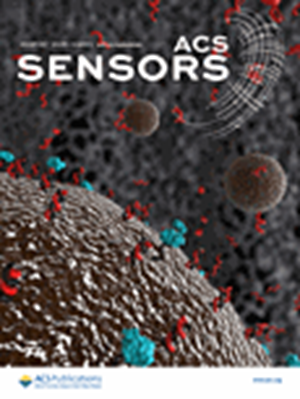An Artificial Olfactory System Based on Synaptic Transistors for Precepting Hazardous Gas to Simulate Organ Injury
IF 8.2
1区 化学
Q1 CHEMISTRY, ANALYTICAL
引用次数: 0
Abstract
Recent advances in artificial olfactory systems have attracted significant attention for their potential applications in humanoid robots and intelligent nasal devices capable of identifying objects and sensing hazards; however, the memory function is absent in traditional gas sensors, which is crucial to assess the long-term exposure risks. Meanwhile, due to the high operation temperature requirement, the gas sensors are usually difficult to integrate with the synaptic devices to form artificial olfactory systems. Here, we propose a novel artificial olfactory synaptic device to obtain and memorize formaldehyde information. The device is composed of an ion gel synaptic transistor integrated with a Ag–ZnO gas sensor, which can simulate the adverse effects of formaldehyde exposure to the human body and make an early warning. The Ag–ZnO gas sensor can detect and recognize different concentrations of formaldehyde as the chemiresistive signal at room temperature with ultraviolet irradiation instead of at high temperatures. The formaldehyde-induced resistive changes are transmitted to the gate voltage of the synaptic transistor, modulating the channel conductance to generate varying postsynaptic currents and to store gas information to realize the memory function. In addition, the postsynaptic current data of different concentrations can be imported into a support vector machine (SVM) for accurate identification, and early warning of different concentrations can be realized through the system. This bionic olfactory system provides a promising strategy for the development of advanced artificial intelligence and danger warnings.

基于突触晶体管的模拟有害气体感知器官损伤的人工嗅觉系统
人工嗅觉系统的最新进展引起了人们的极大关注,因为它们在人形机器人和能够识别物体和感知危险的智能鼻装置中的潜在应用;然而,传统的气体传感器缺乏记忆功能,这对评估长期暴露风险至关重要。同时,由于工作温度要求高,气体传感器通常难以与突触装置集成形成人工嗅觉系统。在此,我们提出了一种新的人工嗅觉突触装置来获取和记忆甲醛信息。该装置由离子凝胶突触晶体管集成Ag-ZnO气体传感器组成,可以模拟甲醛暴露对人体的不良影响并进行预警。Ag-ZnO气体传感器可以在室温下用紫外照射代替高温下检测和识别不同浓度甲醛作为化学电阻信号。甲醛引起的电阻变化传递到突触晶体管的栅极电压,调制通道电导,产生不同的突触后电流,并存储气体信息,实现记忆功能。此外,可以将不同浓度的突触后电流数据导入到支持向量机(SVM)中进行准确识别,并通过系统实现不同浓度的预警。这种仿生嗅觉系统为发展先进的人工智能和危险预警提供了一种有前途的策略。
本文章由计算机程序翻译,如有差异,请以英文原文为准。
求助全文
约1分钟内获得全文
求助全文
来源期刊

ACS Sensors
Chemical Engineering-Bioengineering
CiteScore
14.50
自引率
3.40%
发文量
372
期刊介绍:
ACS Sensors is a peer-reviewed research journal that focuses on the dissemination of new and original knowledge in the field of sensor science, particularly those that selectively sense chemical or biological species or processes. The journal covers a broad range of topics, including but not limited to biosensors, chemical sensors, gas sensors, intracellular sensors, single molecule sensors, cell chips, and microfluidic devices. It aims to publish articles that address conceptual advances in sensing technology applicable to various types of analytes or application papers that report on the use of existing sensing concepts in new ways or for new analytes.
 求助内容:
求助内容: 应助结果提醒方式:
应助结果提醒方式:


